Source of milk Cows Aging time 8–20 months Rind Natural Aging 8–20 months | Pasteurised No Milk source Dairy cattle Texture Hard | |
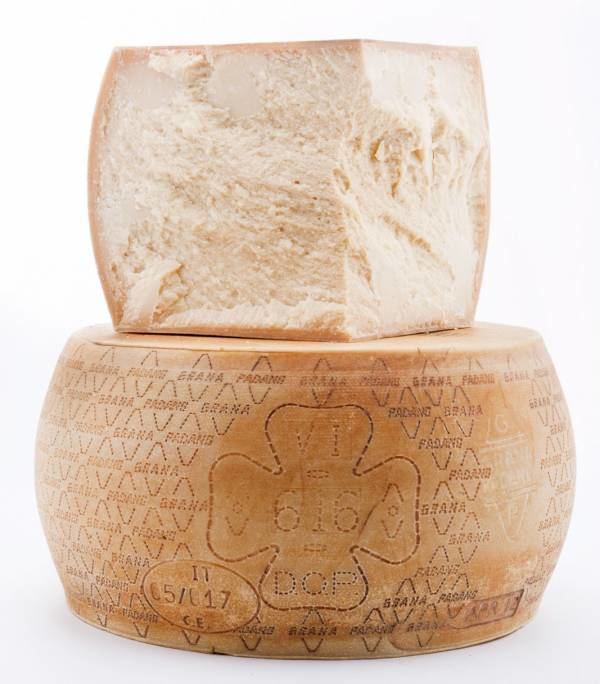 | ||
Region, town Emilia-Romagna:province of PiacenzaLombardy:provinces of Bergamo, Brescia Cremona, Lodi, Mantua (to the left of the Po), Milan and PaviaPiedmont:province of CuneoTrentino:province of TrentinoVeneto:province of Padua, VeronaVicenza, Rovigo and Treviso,In addition to these main centresproduction is permitted in Emilia Romagna: province of Bologna(to the right of the Reno), Ferrara, Ravenna, Forlì-Cesena. and RiminiLombardy: provinces of Como,Lecco, Sondrio and VaresePiedmont: provinces of Alessandria,Asti, Biella, Verbano-Cusio-Ossola,Novara, Turin and VercelliVeneto: province of Venice Certification Italy: DOC 1955EU: PDO 1996 Similar | ||
Tuscan s tour of italy grana padano
Grana Padano ([ˈɡraːna paˈdaːno]) is a hard, slow-ripened, semi-fat cheese from Italy, comparable to Parmigiano Reggiano or "parmesan" cheese. Grana Padano has had protected designation of origin status since 1996. It is made from milk produced in the Po River valley.
Contents
- Tuscan s tour of italy grana padano
- Cooking pasta inside a grana padano cheese wheel in bangkok
- Etymology
- History
- Production process
- Specifications
- Controversy
- References
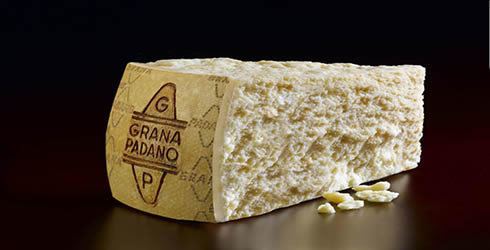
Cooking pasta inside a grana padano cheese wheel in bangkok
Etymology
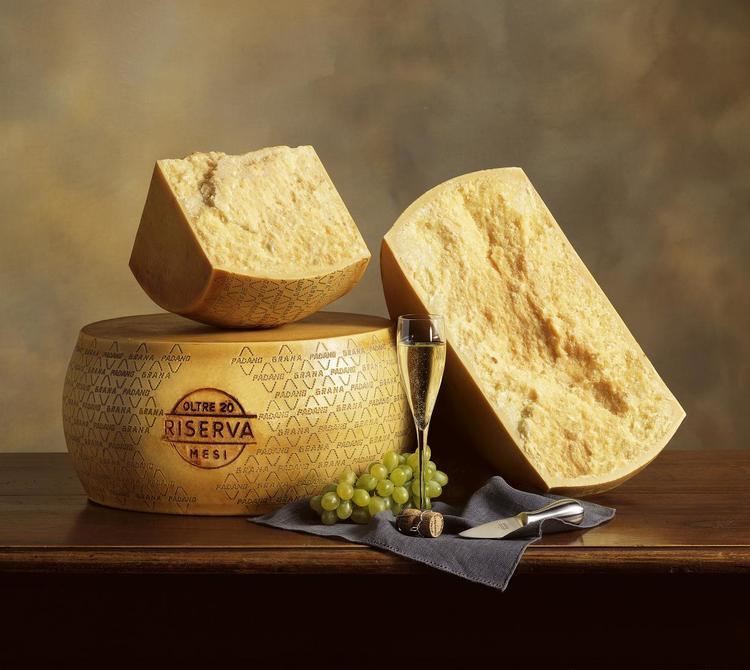
The name comes from the Italian word (formaggio) grana, which denotes cheese with a characteristically grainy texture, and the adjective Padano, which refers to the Po Valley Plain area of northern Italy. It is called "Grana Padano" and not "Grana Padana" because – even though la grana ("grain") is feminine – the operative word in the expression formaggio grana, which describes cheese of this specific type, is masculine (il formaggio).
History
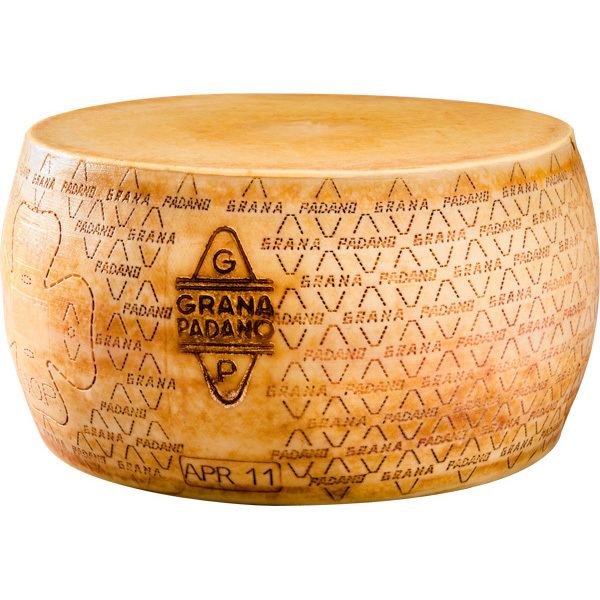
Grana Padano is one of the world's first hard cheeses, created nearly 900 years ago by the Cistercian monks of Chiaravalle Abbey, founded in 1135 near Milan By the year 1477, it was regarded as one of the most famous cheeses of Italy. It can last a long time without spoiling, sometimes aging up to two years. It is made in a similar way to the Parmigiano Reggiano of Emilia-Romagna but over a much wider area and with different regulations and controls.
Production process
Like Parmigiano Reggiano, Grana Padano is a semi-fat hard cheese which is cooked and ripened slowly for at least nine months. If it passes quality tests, it is fire-branded with the Grana Padano trademark. The cows are milked twice a day, the milk is left to stand, and then partially skimmed. Milk produced in the evening is skimmed to remove the surface layer of cream and mixed with fresh milk produced in the morning. The partly skimmed milk is transferred into copper kettles and coagulated; the resulting curd is cut to produce granules with the size of rice grains, which gives the cheese its characteristic texture, and then warmed to 53–56 °C (127–133 °F). It is produced year-round and the quality can vary seasonally as well as by year. Though similar to Parmigiano Reggiano cheese, the younger Grana Padano cheeses are less crumbly, milder and less complex in flavor than their better known, longer-aged relative.
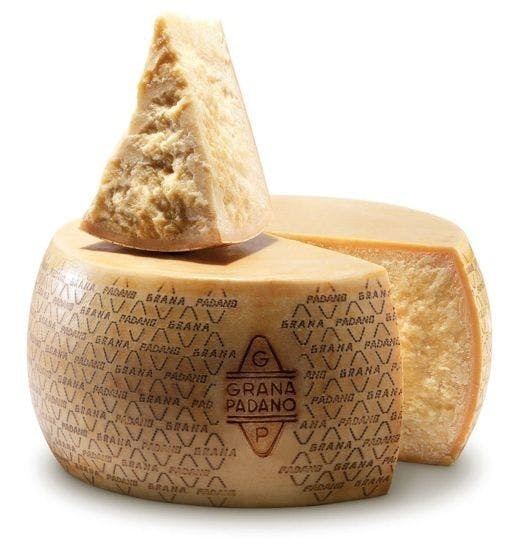
Some of the producers operate large operations. The herd produces capacious quantities of cow manure, and a byproduct is the Shit Museum.
On an annual basis, the Grana Padano consortium exports € 750 million (£570 million) of their product.
Specifications
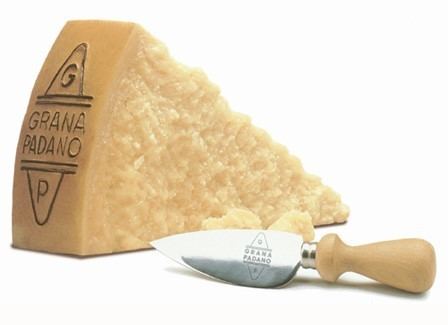
A wheel of Grana Padano is cylindrical, with slightly convex or almost straight sides and flat faces. It measures 35 to 45 cm (14 to 18 in) in diameter, and 15 to 18 cm (5.9 to 7.1 in) in height. It weighs 24 to 40 kg (53 to 88 lbs) per wheel. The rind, which is thin, is pale yellow.
Grana Padano is sold in three different ripening stages:
Grana padano cheese typically contains cheese crystals, semi-solid to gritty crystalline spots that at least partially consist of the amino acid tyrosine.
Controversy
In May, 2016, the Grana Padano consortium filed a legal action against the producers of the U.S. television soap opera series The Bold and the Beautiful for a scene wherein it was claimed the product was disparaged.
